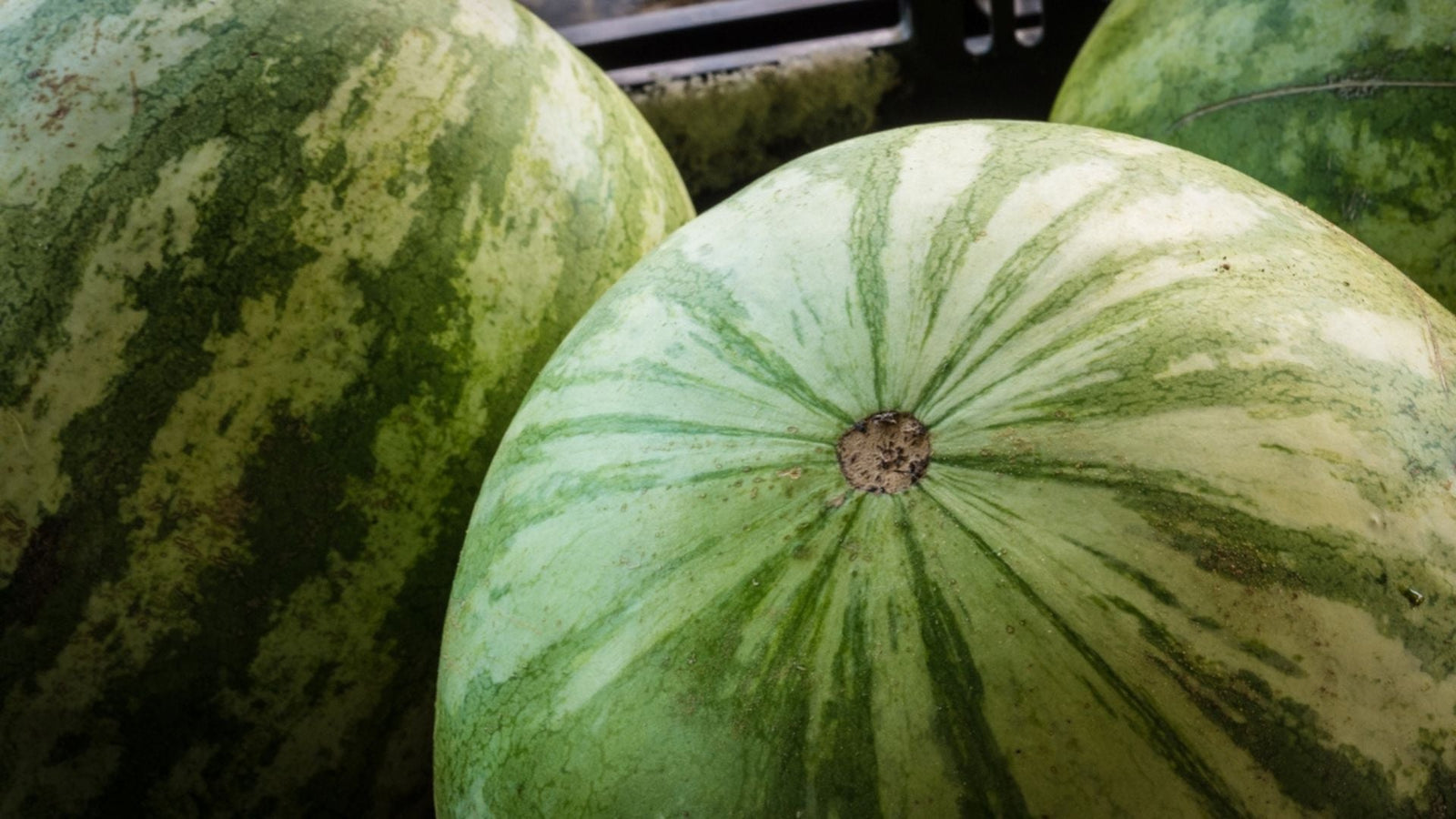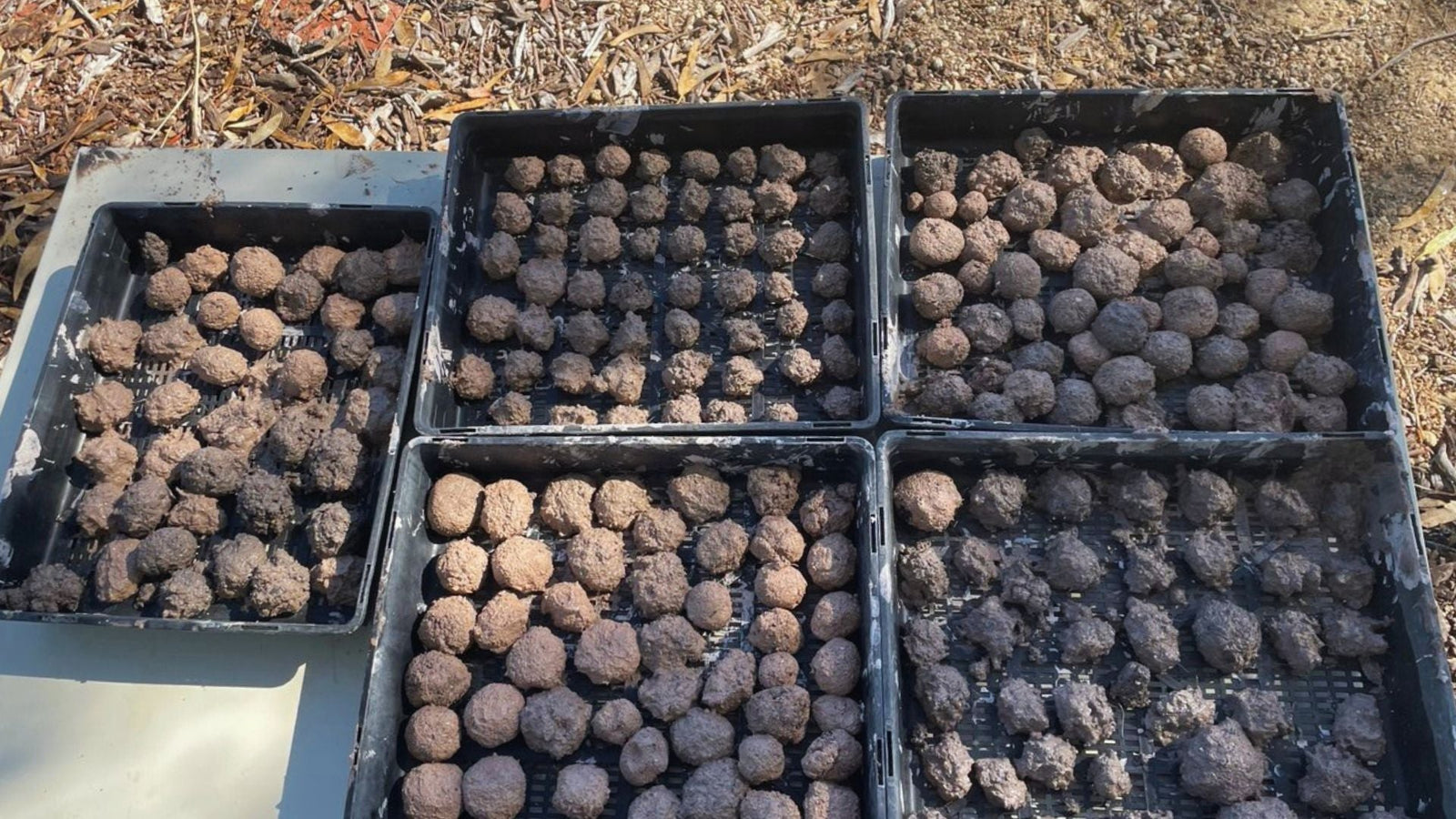How to grow watermelons
Nothing’s quite as refreshing in summer than a crisp, juicy watermelon that’s bursting with sweetness. Grow your own watermelons and they taste even more satisfying!
These sun-loving vines are part of the cucurbit family – the same family as pumpkins and zucchinis. Like their cousins, watermelons love to sprawl, so give them plenty of space to roam (though compact and dwarf varieties do exist if you’re working with smaller garden beds).
Here’s our guide to growing watermelons. Most of this advice can also be applied for other types of melons too, including rockmelon and honeydew. Happy growing!

Select your watermelon variety
There are many varieties of watermelon to choose from. Consider the amount of space you have, and what kind of yield you’re hoping for.
In general, larger varieties (such as Crimson Sweet and Candy Red) tend to grow less fruits per vine. Smaller varieties (such as Sugar Baby) will typically produce more fruit per plant.
Though many varieties love to spread out, you can still grow watermelons if you’ve only got a small yard. Opt for bush-type varieties such as Watermelon Bush Jubilee which have more manageable spreads of 1-2 metres.
|
Crimson Sweet Watermelon |
A popular large watermelon variety, with fruits weighing between 9-14kg. Spreads wide and vigorously. The flesh is crimson, sweet and juicy. |
|
Candy Red / Charleston Grey Watermelon |
Produces large oblong fruit with thick, greyish skin and sweet light pink flesh. Heat tolerant and disease resistant. Spreads wide. |
|
Sugar Baby Watermelon |
A 1950s heirloom variety which produces compact fruit that’s resistant to cracking. Easy to grow from seed and tends to produce abundantly. |
|
Palestinian Pride Watermelon |
Round, soccerball-sized fruit with dark skin and pinky-red flesh. Tasty heirloom variety from a small village called Jenin near Nazareth. |
|
Watermelon Bush Jubilee |
Bush-type watermelon with a smaller spread of about 1-2 metres. Fruit is fine-grained and tender, with a very high sugar content. Naturally resistant to anthracnose and fusarium wilt. |
Choose a sunny location
Originating from the African desert, watermelons thrive in warm soil and full sun. Don’t be shy about planting them in the hottest spot in your garden. They’ll grow in in-ground garden beds as well as raised garden beds.
Wait until the last frosts are well gone before planting seeds, as cool soil can stunt germination.
For a symbiotic boost, plant watermelons near beans or other nitrogen-fixing plants, which enrich the soil as they grow.
Prepare your soil
Melons in general prefer well-drained soil with a neutral pH (6.5–7.5). They are heavy feeders, so enrich your soil withmature compost or worm castings before planting.
If you’re gardening in sandy soils, be sure to mix in plenty of organic matter to boost soil structure and water retention. For heavier clay soils, add gypsum or opt for a large raised bed to improve drainage.
Sow your watermelon seeds
Watermelons do best sown directly into the soil. But in cooler spring temperatures, you can start seedlings early inFertil propagation pots orcoir pellets.
Planting the whole Fertil pot or coir pellet allows you to get your watermelon seedlings into the ground later without disturbing their sensitive roots. In the meantime, keep your seedlings in a warm, sunny spot like a north-facing wall or bright windowsill until the soil outside heats up.
When direct sowing, sow 2–3 seeds per hole, then later thin to the strongest and happiest seedling. Space each seed about 60–80 cm apart to give the vines room to sprawl.
When the vines reach around 1–2 metres long or start flowering, try pinch pruning the growing tips. This helps contain their spread and directs more energy into fruiting.
Also read:Top Tips to Improve Germination Rates
Fertilise for fruitfulness
Boost the growth of your watermelons with a gentle feed at germination and again when plants begin flowering.Mature compost,seaweed solution, or organic liquid fertilisers are ideal for keeping your soil rich and your plants happy.
Remember, living soil means healthy plants. Unfortunately many commercial fertilisers disturb the balance and health of your soil microbes. While they might appear effective in the short-term, in the long term they deplete your soil of the incredible diversity that all plants rely upon.
So have a go at making your own compost, starting up a worm farm or steeping your own weed and compost teas instead.
Don’t have enough time or space for this? Opt for natural, earth-friendly plant food and soil boosters that will support soil life rather than harm it.
We recommend:
-
Soil Dynamics "Happy Gut Tonic" Seaweed Fertiliser, a liquid kelp concentrate which stimulates root growth and protects your plants from stress.
-
Soil Dynamics “Growing Goodness” for a boost of nitrogen, phosphorus and potassium to drive plant growth
-
Earth Food which contains biodynamic organic composted materials, live microbes, and beneficial micro-organisms and enzymes to enhance soil health
Keep your melons well watered
Watermelons rely on deep waterings and prefer to be kept moist. Water deeply in the early morning or late evening to encourage strong roots, and lay down a thick layer of mulch to lock in moisture.
Avoid watering the leaves, as this can lead to fungal problems.
Reduce watering as the fruit nears maturity. This will help concentrate the sugars in the watermelon, producing a sweeter fruit.
Beware that a sudden increase in water as a watermelon is nearly ripe can cause splitting.
Encourage pollination through companion planting
Watermelon plants produce both male and female flowers, which rely on the movement of bees for pollination. The flowers only bloom for a day — so attracting bees into your garden is essential!
Encourage pollinators by surrounding your melons with bee-attracting flowers such as marigolds, borage, cosmos, snap dragons, nasturtiums, and poppies.
Watermelon vines can put out a lot of male flowers at first, and then later put out female flowers. You can tell a flower is female by the little, immature fruit at the base of the flower. If your vine isn’t putting out any female flowers, pick some of the male flowers to stimulate the production of more flowers.
Also read:A Beginner’s Guide to Companion Planting
Manage pests naturally
Managing unwanted creatures with chemicals can have a devastating impact on the health of your soil and the wider ecosystem.
We recommend using natural, nontoxic methods for your own health and the health of your garden. For more information, read ourguide to Integrated Pest Management.
Try these pest management methods to keep your watermelons happy:
-
Plant companion herbs such as mint, dill, oregano, basil, onions and garlic. These can help by repelling common pests like aphids, mites, and whiteflies.
-
Attract predators such as birds and ladybirds into your garden by providing food (flowers), water and habitat. Predators will help keep populations of unwanted creatures in check.
-
If you have slater problems, try beer traps to reduce their numbers.
-
Physically separate your watermelons from the ground to prevent insects from reaching them.
Troubleshooting watermelon problems
-
Seeds not germinating? The soil’s likely too cold. Wait until the weather warms consistently.
-
Vine is producing male flowers, but no female flowers have appeared after a couple of weeks? Pick some of the male flowers to stimulate the vine to keep producing flowers.
-
Vine is producing female flowers, but none seem to be pollinated? Try hand pollinating by picking a male flower and rubbing the pollen onto the tall stigma inside the female flower.
-
Leaves are looking sad? They may have a fungal disease. Avoid watering the leaves or creating humid conditions.
-
Insect damage on the underside of your melons? Physically separate the melons from the soil using horticultural fabric.
Harvest your melons
Watermelons are ready to harvest when they sound hollow when tapped. They should also smell sweet, and should come off the vine easily. If your melon isn’t coming off the vine easily, it’s not ripe yet.
Growing watermelons takes patience and space, but the reward — slicing into your own sun-ripened fruit — is one of the true joys of summer gardening. With the right soil, warmth, and pollinator friends, your patch will soon be bursting with sweetness!






Leave a comment (all fields required)